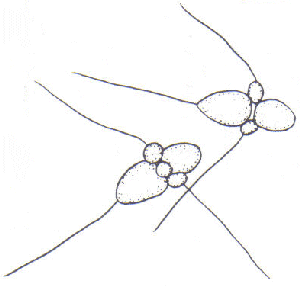I have always been fascinated by fungi. Fungi are a group of organisms to which moulds (mildews), yeasts, and mushrooms belong. Fungi used to be classified under the plant kingdom. However, they differ from plants in that they cannot make their own food and their cell wall is mainly made of chitin and glucan and not cellulose. Since they cannot make their own food, fungi have to survive as either saprophytes, parasites (pathogens) or by forming symbiotic relationships with their hosts. Saprophytic moulds are the ones commonly found in indoor environment growing on wall surfaces and other organic substrates. It is estimated that there are close to 1.5 million species of fungi but only about 100,000 species have been described.

My interest in fungi started when I completed my B.Sc. (Agriculture) and got employed as a plant pathologist. As a trainee plant pathologist, I spent countless hours in a plant clinic where farmers brought their diseased plants for diagnoses. My first fungus to identify without help was Entomosporium. One feature that makes me remember this fungus is the shape of the spores. The spores have appendages that make them resemble insects or two-legged mice with legs stretched sideways. I also went out into the field collecting diseased plants and taking them back to the laboratory for disease diagnoses and preservation as reference material. Working with diseased plants is not always easy because they won’t tell you where it is hurting (if at all they feel pain). You have to depend on symptoms and laboratory culturing and identification of the causative agent. If a plant is just wilting, for example, it is had to tell the cause of wilting which could be due to fungi, nematodes, bacteria, physical/chemical or physiological factors that interfere with water movement in the plant.
In my early days as a trainee, one challenge I had was to isolate the disease causing agent and getting pure cultures of the mould. It was not always easy because of the myriad saprophytic moulds and bacteria present on the surfaces of the plant. However, I learned quickly some clever ways plant pathologists and mycologists have developed to overcome the problem of contamination.
I was fortunate to be taught and interact with some of the world authorities in Mycology at CABI Bioscience (formerly the International Mycological Institute) and the University of Kent in the United Kingdom. These great people made me to like the subject.
My interest in fungi is now focused on indoor moulds. Indoor moulds are recognized health hazards and it is estimated that 20% of human population is sensitive to mould exposure. It is also believed that long-term exposure to mould could lead to sensitization.
